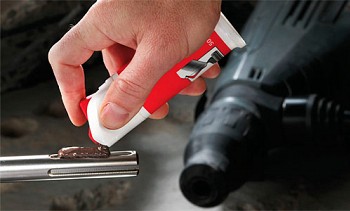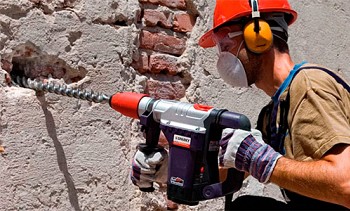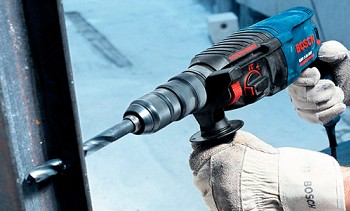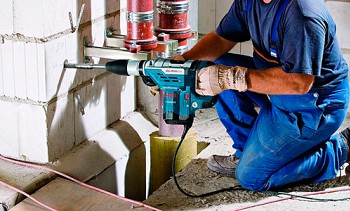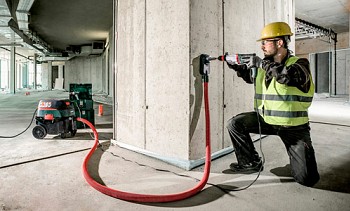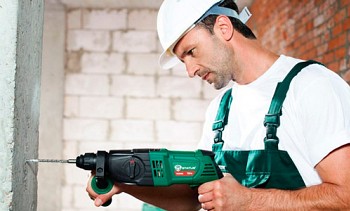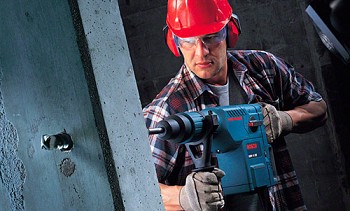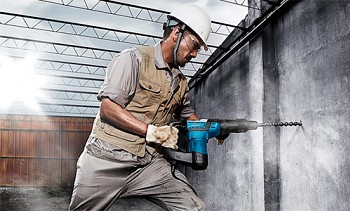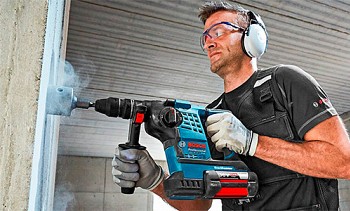The puncher is an indispensable tool in construction and repair, with the help of which holes are made in the walls of concrete, stone or other material. Outwardly, it looks like a drill, but the principle of operation is different. In this article, various types of perforators, the purpose of each tool and its application area will be considered.
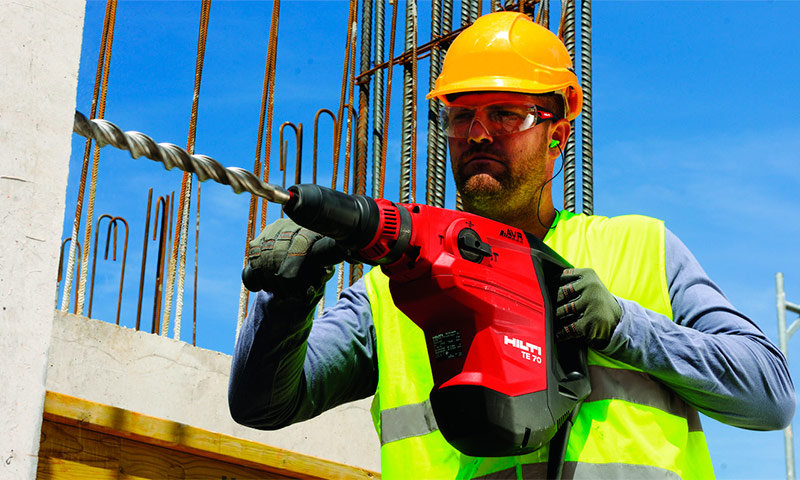
Content:
Types of rotary hammers by weight and purpose
The following groups of devices are distinguished by weight and purpose:

Lightweight (household) rotary hammers
- 2-4 kg.

Medium (semi-professional) rotary hammers
- 5-8 kg.

Heavy (professional) rotary hammers
- 8-10 kg.
Household Hammers
Lightweight are considered perforators weighing less than 4 kg. They are bought for periodic repair work in the home or garage. Better known as "household punch".

Semi-professional rotary hammers
Semi-professional tools weighing from 5 to 8 kg belong to the middle class; they are distinguished by increased power and impact force (5-7 J). The tool can even cut a steel grate, not to mention making a hole in a concrete wall.

Professional rotary hammers
The heavy class includes rotary hammers weighing over 8 kg and impact force more than 8 J. The tool is designed for long, continuous operation. It is usually used by repair teams, therefore it is called professional. Buying a heavy hammer drill for domestic use is an unjustified investment.

How do perforators differ by type of impact mechanism
For the formation of shock force in perforators, special systems are used. They differ in the structure and principle of formation of shock force. Distinguish between pneumatic and electromechanical shock systems.
Pneumatic Impact System
In a pneumatic shock system, the main elements of the mechanism are:
- moving alternately working pistons;
- strikers to which the blow from the piston is transmitted;
- air bags that increase pressure in the system.
These types of rotary hammers do not require strong pressure on the tool by the user. To perform its functions efficiently, it is enough to make a small effort for the tool to carry out impact actions. Strong pressure on the tool will quickly break it.
The principle of operation of this system, see the video:
Electromechanical shock system
Electromechanical percussion mechanisms are equipped with domestic and semi-professional models.
The principle of operation of the electromechanical system:
- the eccentric activates the lever spring;
- the lever moves the percussion device;
- the latter transfers the impact energy to the rig.
When using such punchers, it is necessary to exert pressure on the tool to create more effective strokes.
The principle of operation of this system, see the video:
Hammers in the shape and location of the engine
In terms of appearance and shape, the existing perforators can be divided into L-shaped (vertical arrangement of the engine) and straight lines (horizontal). The design of the first type is good in that it allows to reduce the length of the device and increase the cooling area of the engine.The rotary hammer with a vertical engine runs longer without interruptions, because it does not overheat, and at the same time has an increased resource.

However, this tool is generally cumbersome, which reduces its maneuverability in tight spaces. For domestic purposes, devices with a horizontal engine are preferred. They are compact, lightweight, comfortable. In addition, during repairs it is rarely necessary to operate the hammer drill for several hours without interruption.

Difference between perforators by the type of attachment system used
The capabilities of the tool are largely determined by the way of fixing the tool.
Three snap systems are known:

SDS-plus.

SDS-max.

SDS-top.
SDS + is used on compact home rotary hammers. The diameter of the tool shank for this type of mount is 10 mm. A device equipped with this system is capable of making a hole with a diameter of up to 30 mm. Tools with SDS-plus are more in demand than others because they are cheaper than rotary hammers with other types of tool fasteners.

The SDS-max system is equipped with professional devices. They make holes up to 52 mm, so the drill must be fixed securely. The diameter of the tool shank is 18 mm. If the weight of the drill exceeds 8 kg, most likely it has an SDS-max fastening system.

There are models of hammers equipped with the SDS-top system, which is built on the basis of the SDS + system, but has a shank with a diameter of 14 mm. Hammers equipped with such a system are used to produce small holes from 16 to 25 mm in diameter. These types of rotary hammers are reliable and durable. Some Bosch rotary hammers have this particular drill attachment system.

The drill is fixed using oval grooves. Each system has two of them, but the diameter of the fixed shank is different: plus - 10 mm, top - 14 mm, max - 18 mm.
Torque is transmitted via long splines. The plus system has two of them, both are symmetrical, the top - two asymmetric, max - three asymmetric slots.
Punch modes
Modern rotary hammers are:
- 2 modes (drilling + drilling with impact);
- 3 modes (drilling + drilling with impact + only impacts).
Drilling is an auxiliary function of the punch, and it is not recommended to activate it without impacts - a drill is better for this purpose. If it is necessary to perform drilling without impact using a perforator, it is necessary to turn off the impact function and fix in the snap not a drill, but ordinary drills for a drill. It is allowed to drill wood, plastic, foam concrete, thin metal.
There are two ways to fix a snap:
1. Remove the SDS cartridge from the rotary hammer and replace it with a conventional drill.

2. Put an adapter on the SDS cartridge (sometimes it comes with the tool).

The first method is preferable, since the drill is fixed more reliably, the radial runout is minimal, and the accuracy of the holes is higher.
The chiselling function can be activated by disabling the rotation mode of the drill. The equipment will only perform reciprocating movements and, according to the principle of operation, will resemble a chipper.
Slotting is relevant for:
- the dismantling of walls, ceilings, beams, masonry;
- chipping plaster;
- ditching grooves for communications and wiring.
If you hammer a wall with a drill, it will become dull, therefore chisels are used. For small holes - mortising, for the destruction of stone objects - dismantling, for chipping edges or removing tiles - bran.
Drilling with a punch is the main mode of operation of a hammer drill. A drill with a winning tip, which quickly penetrates into solid material, is used here. This mode is characterized by an increased noise level, but the process takes less time due to the high efficiency of each stroke.
Types of power drills
The following types of perforators are distinguished by the method of generating electricity:
- network
- rechargeable.
The former is characterized by the presence of a long cord - an intermediary between the instrument and a 220 V household network. They are often used at home.

Battery models that can work for several hours without the need for recharging. Such devices are tried on both in home workshops and by professionals, when performing construction and installation works, in conditions where it is difficult to connect to the electric network.

In order for the tool to meet the expectations of the user, it is necessary to know what are the punchers, to have an idea of their design features, functions, operating modes.

